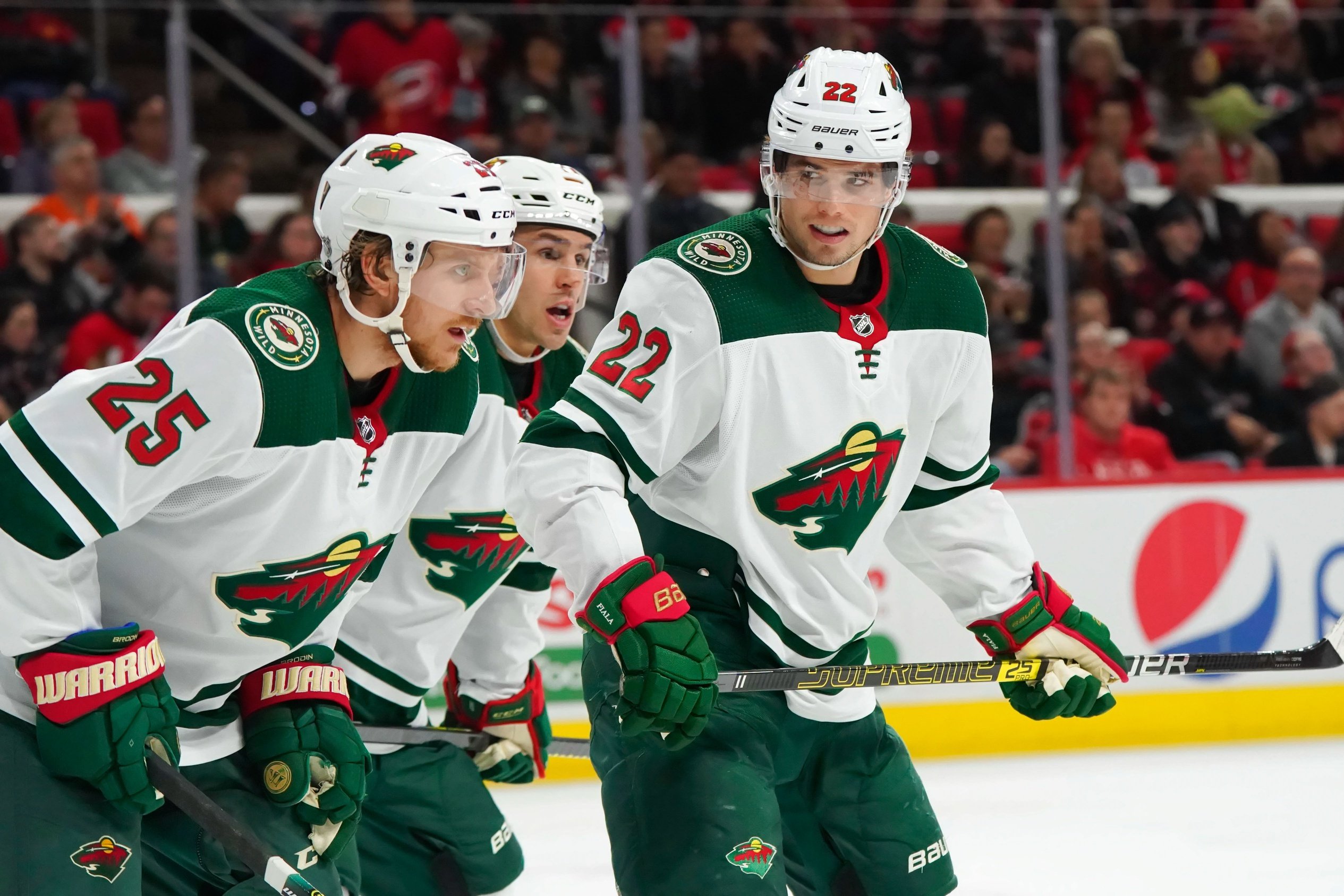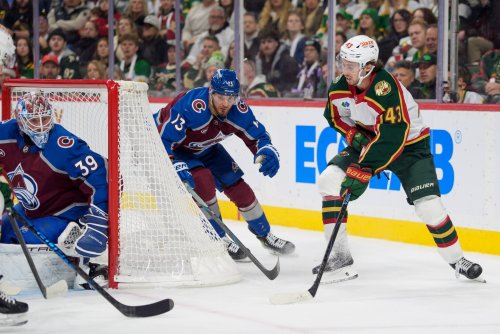
If the Minnesota Vikings own the worst special teams conundrum in the Twin Cities, the Minnesota Wild are right behind them. For years the power play was incredibly mediocre under Mike Yeo, but it rose to respectability when Bruce Boudreau took over behind the bench. Now armed with sharp-shooters Kevin Fiala and Kirill Kaprizov opposite Matt Dumba and his Howitzer, the power play has a chance to become fun and exciting.
The other side of the puck needs some help, however.
The Wild penalty kill was long considered a strength of the team. A rigid structure, strong goaltending, and players like Mikko Koivu, who pride themselves on defense, was the recipe for a perennial top-10 penalty kill. That strength disappeared last season. The penalty kill dropped from a consistent 81% from 2016 to 2019 to a brutal 77.2% in 2020.
Minnesota’s structure was still intact last year. According to Evolving-Hockey.com, both Shots Against per hour and Expected Goals Against per 60 remained relatively flat -- it was the goaltending that completely fell off a cliff. Alex Stalock’s 88.44% and Devan Dubnyk’s brutal 84.57% save percentage in 4-on-5 penalty kill situations took a largely top-10 PK and turned it into a 25th-ranked unit.
The Wild are hoping -- fingers crossed -- that new goalie Cam Talbot can elevate the penalty kill back to prominence. Talbot hasn’t fared much better in recent seasons in penalty kill situations. His 88.4% save percentage is nearly identical to Stalock’s. Granted, he hasn’t played behind the Wild’s structure yet. Can the Wild defense buoy Talbot enough to turn last season’s weakness into a strength?
Rather than wait for answers, the Wild could employ a whole new penalty kill strategy: the Power Kill. It’s a newer strategy that is predicated on aggressiveness, speed, and offense. Usually, offensive players take a backseat to the defense when penalties are assessed; conventional wisdom is to put the best defensive forwards on the ice. It’s safe and more comfortable for a coach to rely on players they know can manage the puck and not take unnecessary risks, leading to scoring chances against. The power kill flips this idea on its head, placing the offensive weapons on the ice, and allows them to full-court (or 'rink,' if you will,) press.
Minnesota no longer has Koivu, Eric Staal, Jason Zucker, or Mikael Granlund upfront to take on the league's best power plays. Evason could rely more on Marcus Foligno and Joel Eriksson Ek. He could throw Ryan Hartman and Jordan Greenway over the boards too. Despite each of those forwards being stronger closer to their own net, it’s Fiala and Kaprizov who should receive more shorthanded minutes. After all, that duo is the franchise's future and must be featured as much as possible. Minutes are hard to come by in the NHL, which is one way to get them on the ice more often.
Evason knows what he has in a PK unit consisting of Eriksson Ek and Foligno. They will pressure in the zone, force turnovers, and clear the puck down the ice to relieve the pressure. A power kill with Fiala and Kaprizov, and maybe Marco Rossi in the future, starts by pressuring the puck carrier deep in the zone, not allowing the breakout to happen. Then, there’s constant back pressure through the neutral zone using speed and quickness to close off passing lanes and create chances for forwards to mishandle the puck.
This technique doesn’t allow the team on the power play to ever enter the zone and get set up. Say the team with the man advantage does get set up. As Alison Lukan of The Athletic and Meghan Hall of Hockey-Graphs.com pointed out during the Columbus Blue Jackets Hockey Analytics Conference last February, three players on the PK are set up in a triangle formation to protect the most dangerous areas of the ice, while the fourth player, typically a forward, applies pressure.
The power kill presentation begins at the 1:23:30 mark.
[caption id=attachment_80008" align="aligncenter" width="789] Power Kill formation courtesy of Alison Lukan and Meghan Hall.[/caption]
Power Kill formation courtesy of Alison Lukan and Meghan Hall.[/caption]
Lukan describes this formation, which the Blue Jackets utilized, as a “Check-Press, or Wedge Plus One.” The two forwards will either pressure or switch to cover the top of the triangle. Being aggressive is key and pressuring the puck carrier for turnovers is the name of the game. Then once the turnovers happen, the PK turns defense into offense quickly.
This strategy not only creates more scoring chances in an otherwise non-offensive situation, but it keeps the puck as far away from the net. And when the idea is to keep the other team from scoring, keeping the puck 200 feet away from the dangerous areas seems like a better strategy.
Unfortunately, Kaprizov and Fiala are just two players. It’s not a strategy the Wild, at this point, can employ on a full-time basis. Minnesota can put the tandem of Eriksson Ek and Foligno to take care of the opposition’s first unit. Then, once the lines change and the second power-play unit hops the boards, Fiala and Kaprizov can pounce and catch the other team napping in rope-a-dope fashion.
Now is the time to implement this strategy. Even without a full stable of forwards who can play the style, it sends a message to every newcomer that the Wild will be in-your-face aggressive and aren’t afraid to take whatever advantage you think you had on this power play away. When they add a Matt Boldy, Alexander Khovanov, or a Rossi to the lineup in the near future, it isn’t something new to them or the team. Waiting to have the horses before implementing this strategy will be too late. Players should expect this when they come to Minnesota.
The Wild have long been a team that has been stale, boring, and unimaginative. Their conservative approach doesn’t create new fans. As the Wild enters a new era, changing the product on the ice in terms of personnel is only a part of creating change. Employing inventive and imaginative coaching strategies to showcase the talent they have will generate more buzz at the ticket office.
If Evason and Guerin can achieve that, then they’ll have done the single best thing for this franchise -- make it about fun.
Think you could write a story like this? Hockey Wilderness wants you to develop your voice, find an audience, and we'll pay you to do it. Just fill out this form.







Recommended Comments
Join the conversation
You can post now and register later. If you have an account, sign in now to post with your account.
Note: Your post will require moderator approval before it will be visible.